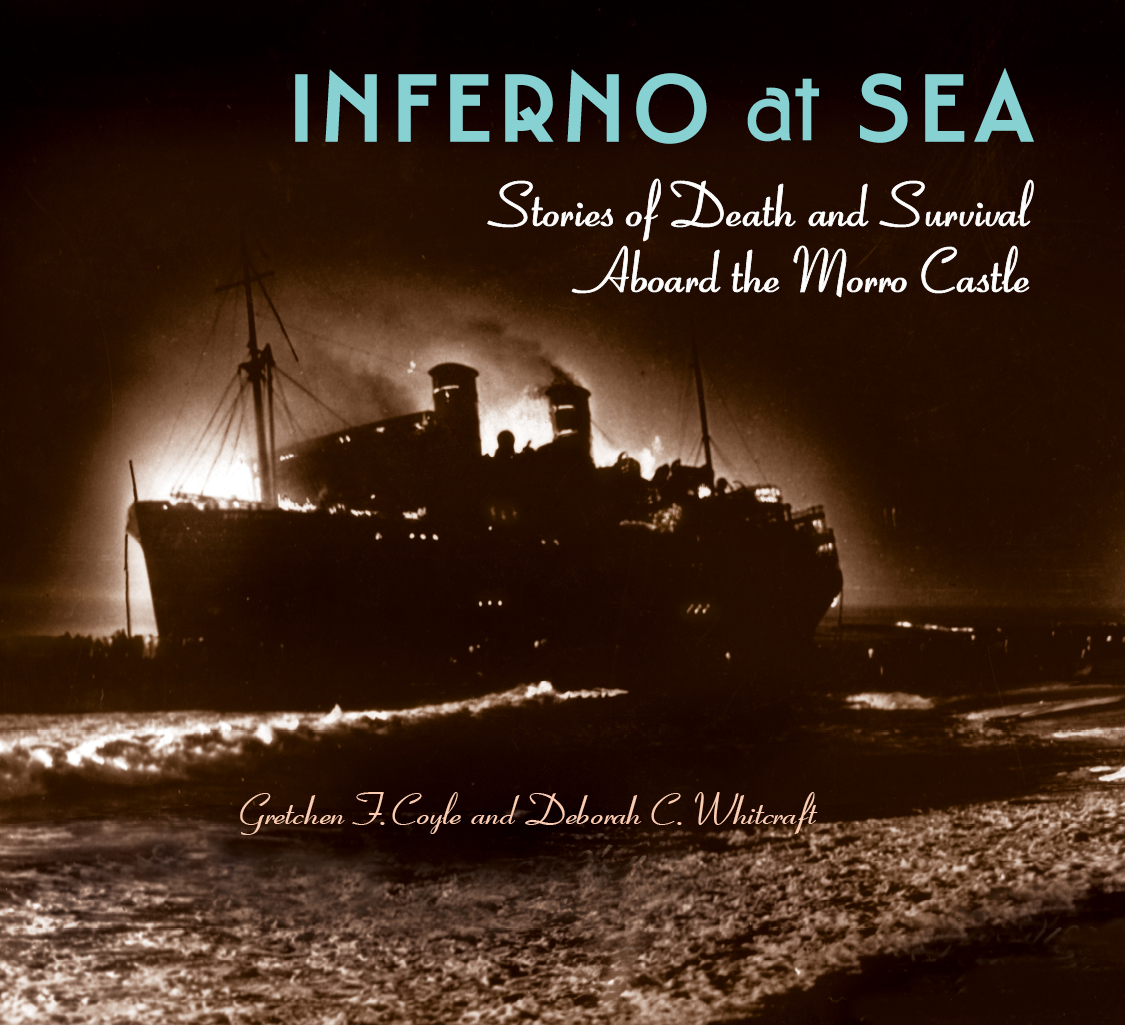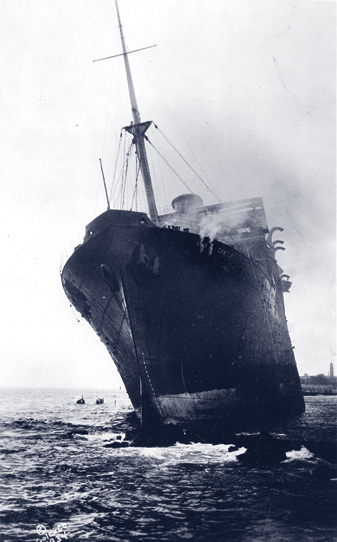|
|
||||||||||||||||||||||||||||||||
|
“I was close to the rail. I’d stand on one foot until it got too hot, then stand on the other. The fire looked like a grass fire running across the deck. Oil in the paint accelerated it. ... The fire was underneath and heating the steel deck. |
||||||||||||||||||||||||||||||||
 |
||||||||||||||||||||||||||||||||
|
||||||||||||||||||||||||||||||||
| click here to read an article in the Asbury Park Press by Kirk Moore | ||||||||||||||||||||||||||||||||
|
|
||||||||||||||||||||||||||||||||
|
BOOK DESCRIPTION
It was the great disaster of the 1930s, a horrific experience for all those aboard the ill-fated liner Morro Castle. Sailing to New York from exotic, anything-goes Cuba, the luxurious cruise ship was filled with passengers finding an escape from the Great Depression. But after the parties ended and guests were packing their belongings, preparing for their arrival home in the morning, the ship became a scene of panic as a raging fire quickly spread, killing 137 and sending many overboard. Controversy and intrigue surrounded the mysterious death of the captain, as well as the cause of the fire itself, and much of the mystery has endured for nearly eighty years. But for many of those who survived the tragedy, it was a closed subject; they rarely spoke of the events, and held the awful memories away from loved ones. In Inferno at Sea, we finally hear those personal accounts. Survivors tell their stories, family and friends share narratives of those lost that night, rescuers and volunteers all contribute to give us a rare glimpse into the events of September 8, 1934. The fading, maritime mystery of the Morro Castle fire remains, but those closest to the disaster speculate about what really happened, and we gain a new perspective on a famous and tragic New Jersey shipwreck. EXCERPTS Entertaining Hero: Smartly clad in a crisp white summer uniform and clean white buck shoes, Bob Smith instructed passengers in the game of ship-board shuffleboard, a course laid out on A-Deck. Behind the shuffleboard court, a badminton net provided more physical exercise for young couples tossing a Frisbee-type ring back and forth. Cooling off with a hose that sprayed salt water on hot sunbathers was a popular activity for those aboard the Morro Castle. There were miniature golf putting greens where first time and serious golfers could test their expertise. If there was fun to be had, it was under the direction of Bob Smith and his assistant Herman Cluthe. Bob Smith was the most visible officer on the Morro Castle, the person most known by the passengers. Bob Smith had an idea for an activity that would provide entertainment and something that was much needed — life preserver drills. Each participant would have to find his or her life preserver, put it on, and get to an assigned life boat. The idea was immediately vetoed by Captain Robert Willmott, whose rationale was that life preserver drills might lead passengers to think something bad could occur on the Morro Castle. “It is safer on the ship than at Broadway and 42nd Street,” Captain Willmott told the cruise director. Bob Smith was employed by the Ward Line aboard the Morro Castle for one and a half years and time off was rare. One of his duties was to “Conduct passengers on sightseeing tours in Havana.” The only time Bob Smith ever saw the lifeboats lowered was in Havana when they were “used as scaffolds for painting.” |
|||||||||||||||||||||||||||||||
|
GRETCHEN F. COYLE, an author and magazine writer, is a graduate of The Baldwin School and Hollins University. As a past president of the Long Beach Island Historical Association and the Tuckerton Seaport Board of Trustees, she is a well-known authority on maritime history. She and her husband John enjoy exploring the waters between their homes in Beach Haven, N.J., and Useppa Island, Fl. |
||||||||||||||||||||||||||||||||
 |
||||||||||||||||||||||||||||||||
|
||||||||||||||||||||||||||||||||